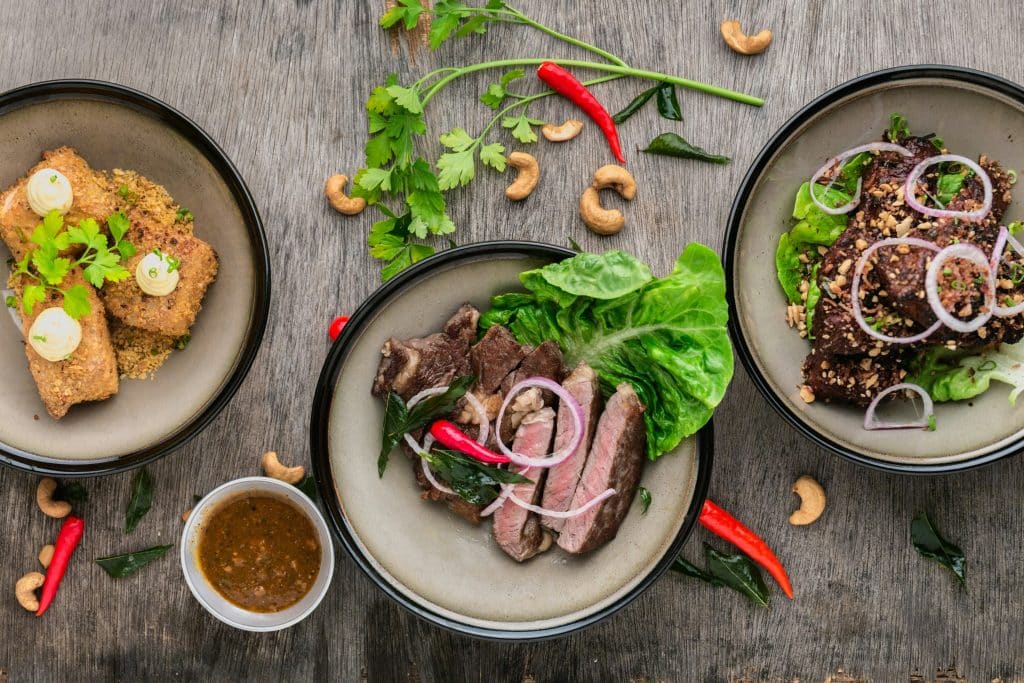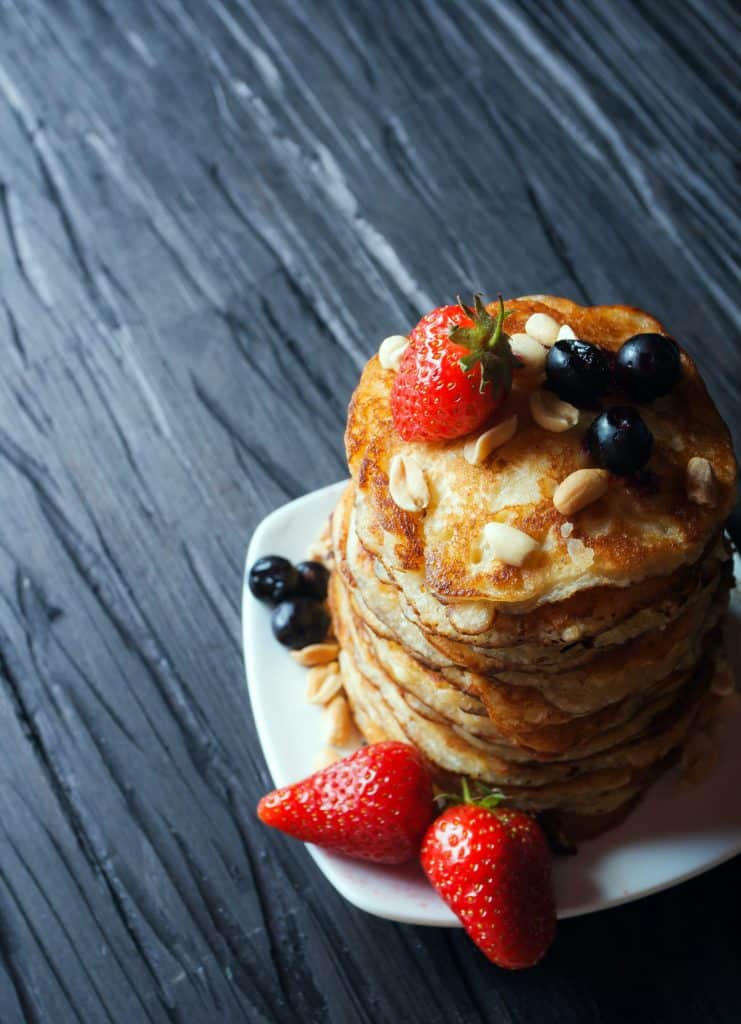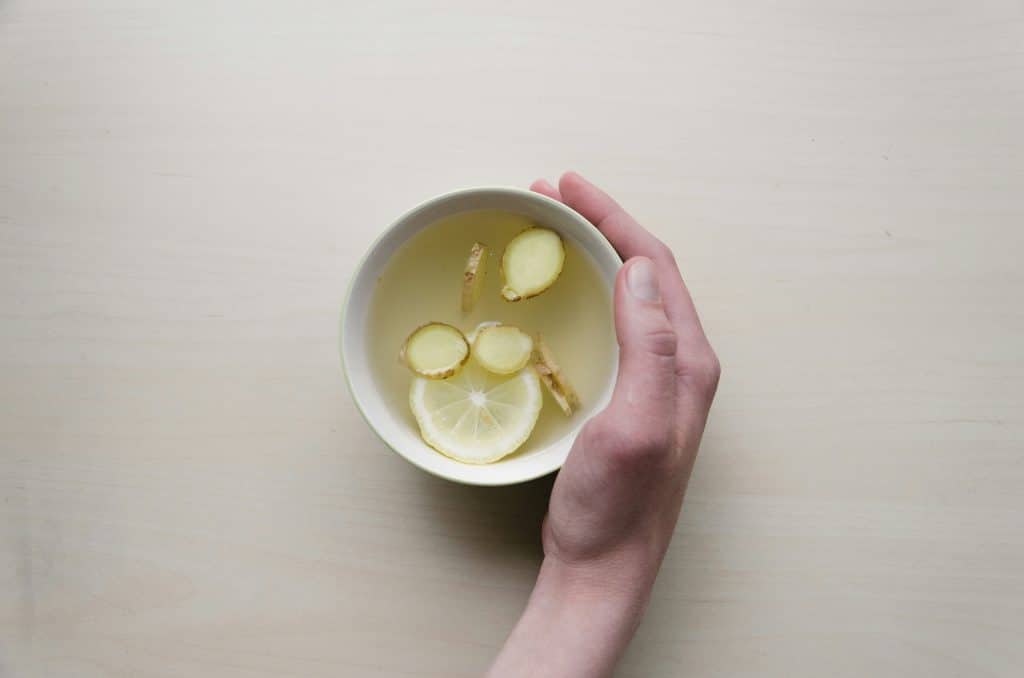If you’re a new parent or caregiver, you know how important it is to provide your little one with the best nutrition. And when it comes to introducing solid foods, making your own homemade baby food can be a great option. Not only does it allow you to control the ingredients and ensure freshness, but it can also be a fun and rewarding experience. In this article, we will share a variety of nutritious and easy-to-make homemade baby food recipes that will have your little one happily exploring new flavors and textures in no time.

This image is property of images.unsplash.com.
1. Age-appropriate Recipes
1.1 Introduction to Age-appropriate Recipes
When it comes to feeding your little one, it’s important to offer age-appropriate recipes that are nutritious and easy to make. As your baby grows and develops, their nutritional needs also change. From introducing first foods to exploring new flavors and textures, this article will guide you through the journey of preparing homemade baby food for different age groups.
1.2 Recipes for Babies (6 months and above)
At around 6 months old, your baby is ready to start solid foods. It’s an exciting milestone! When preparing recipes for babies in this age group, it’s important to focus on introducing single-ingredient purees to ensure easy digestion and minimize the risk of allergies. Some great starter foods include pureed fruits like mashed bananas or avocados, and vegetables like steamed sweet potatoes or carrots.
1.3 Recipes for Toddlers (12 months and above)
As your baby transitions into toddlerhood, their taste buds develop and they become more adventurous eaters. It’s important to continue offering a variety of foods to support their growth and development. Some easy and nutritious recipes for toddlers include soft and cut foods like cooked pasta or small pieces of steamed vegetables. You can also introduce bite-sized finger foods like soft cooked fruit slices or cheese cubes.
2. Essential Nutrients for Babies
2.1 Introduction to Essential Nutrients
Nutrition is crucial during the early stages of your baby’s life. Providing them with the right balance of essential nutrients is essential for their growth and development. These nutrients include carbohydrates, proteins, fats, vitamins, and minerals. Each nutrient plays a unique role in supporting different bodily functions and ensuring your baby’s overall well-being.
2.2 Nutrient Requirements for Babies
When it comes to feeding babies, there are specific nutrient requirements that need to be met. For example, carbohydrates provide energy, proteins aid in growth and development, fats support brain development, and vitamins and minerals contribute to a healthy immune system. It’s important to offer a variety of nutrient-rich foods to ensure that all these requirements are met.
2.3 Incorporating Essential Nutrients in Homemade Baby Food
Preparing homemade baby food gives you the opportunity to control the quality and quantity of essential nutrients in your little one’s meals. To incorporate these nutrients, you can include a variety of fruits, vegetables, whole grains, lean proteins, and healthy fats in their diet. For example, you can steam and puree a combination of sweet potatoes, peas, and chicken to provide them with a balanced meal packed with essential nutrients.
3. Benefits of Homemade Baby Food
3.1 Introduction to Benefits of Homemade Baby Food
Homemade baby food offers numerous benefits for both you and your little one. From having control over ingredients and quality to being more cost-effective, preparing meals at home allows you to provide the best possible nutrition for your baby’s growing needs. Let’s explore some of the key advantages of making your own baby food.
3.2 Control Over Ingredients and Quality
One of the biggest advantages of preparing homemade baby food is having complete control over the ingredients and quality of the food you offer your little one. You can select organic produce, choose fresh and high-quality ingredients, and avoid additives, preservatives, and unnecessary sweeteners. This gives you peace of mind knowing exactly what goes into your baby’s meals.
3.3 Cost-effectiveness
Making homemade baby food can also be more cost-effective compared to purchasing pre-packaged options. Buying fresh ingredients in bulk and preparing large batches of food can help save money in the long run. Additionally, you can reuse containers for storage, reducing waste and saving even more.
3.4 Introduction to New Flavors and Textures
Another wonderful benefit of homemade baby food is the opportunity to introduce your little one to a wide variety of flavors and textures. By preparing meals from scratch, you can gradually expose them to different tastes, helping them develop a diverse palate and a love for healthy foods. Plus, experimenting with new ingredients can make mealtime exciting and enjoyable for both of you.
4. Equipment and Tools
4.1 Introduction to Equipment and Tools
To successfully prepare homemade baby food, it’s important to have the right equipment and tools on hand. These essentials will make the cooking process much easier and more efficient. Let’s take a look at some of the basic cooking tools as well as specific equipment that will come in handy when making baby food.
4.2 Basic Cooking Tools
Before diving into the specific equipment, it’s important to have some basic cooking tools in your kitchen. These include pots and pans for cooking, a cutting board and knife for chopping ingredients, a steamer basket for easily steaming fruits and vegetables, a food masher for creating purees, and a spoon for feeding your little one.
4.3 Blenders and Food Processors
Blenders and food processors are essential tools for creating smooth and consistent purees for your baby. They make it easy to achieve the desired texture, whether you want a silky-smooth puree or a slightly chunky one. Investing in a high-quality blender or food processor will make preparing homemade baby food a breeze.
4.4 Storage Containers
Proper storage of homemade baby food is essential to maintain its freshness and quality. Invest in a set of BPA-free storage containers that are freezer-safe and have airtight lids. This will allow you to prepare large batches of baby food and store them in smaller portions for easy thawing and serving as needed.

This image is property of images.unsplash.com.
5. Hygiene and Safety Tips
5.1 Introduction to Hygiene and Safety Tips
When it comes to preparing baby food, hygiene and safety should always be a top priority. Babies have delicate immune systems, so it’s crucial to take extra precautions to minimize the risk of foodborne illnesses and ensure that the food you prepare is safe for consumption. Here are some important hygiene and safety tips to keep in mind.
5.2 Importance of Cleanliness
Maintaining a clean and sanitary environment is essential when preparing homemade baby food. Make sure to wash your hands thoroughly with warm water and soap before handling any ingredients. Additionally, clean all utensils, cutting boards, and preparation surfaces with hot soapy water to prevent cross-contamination.
5.3 Proper Handling of Ingredients
When working with ingredients for baby food, it’s important to properly handle them to prevent any contamination. Rinse fruits and vegetables thoroughly under running water to remove any dirt or debris. Cook meats, poultry, and fish to the right internal temperature to kill any harmful bacteria. Avoid using expired or spoiled ingredients, and always check for any recalls on the products you’re using.
5.4 Safe Storage and Thawing Techniques
Proper storage and thawing techniques are crucial for maintaining the quality and safety of homemade baby food. Divide freshly prepared food into small portions and store them in airtight containers in the refrigerator or freezer. When thawing frozen baby food, do not leave it at room temperature for too long. Thaw it in the refrigerator or use the defrost function on your microwave to ensure even heating.
6. First Foods for Babies
6.1 Introduction to First Foods for Babies
Introducing first solid foods to your baby is an exciting milestone that opens up a whole new world of flavors and textures for them to explore. It’s important to start with simple and easy-to-digest foods to allow their little bodies to adjust. Let’s take a look at some of the recommended first foods for babies.
6.2 Single-Ingredient Purees
Single-ingredient purees are a great way to introduce your baby to new flavors and textures. Start by offering single foods at a time to watch for any allergic reactions or digestion issues. Some popular options for single-ingredient purees include mashed bananas, cooked sweet potatoes, pureed peas, and applesauce.
6.3 Simple Combination Purees
Once your baby has successfully tried a variety of single-ingredient purees, you can gradually introduce simple combination purees. These blends offer a wider range of flavors and provide more nutrients. Popular combinations include mashed avocado and pear, butternut squash and apple, and spinach and potato puree. Be creative and experiment with different combinations to keep mealtime exciting for your little one.

This image is property of images.unsplash.com.
7. Finger Foods for Babies and Toddlers
7.1 Introduction to Finger Foods
As your baby grows into a toddler, they will develop the ability to self-feed and enjoy a wider range of textures. Finger foods are great for encouraging independent eating skills and fine motor development. Let’s explore some of the finger foods that are safe and appropriate for babies and toddlers.
7.2 Soft and Cut Foods for Babies
For babies who are just starting to explore finger foods, it’s important to offer soft and easily mashed options. Some examples include well-cooked pasta shapes, steamed and mashed vegetables like carrots or sweet potatoes, and soft fruit slices such as ripe pear or banana. Make sure to cut the foods into small, age-appropriate pieces to minimize the risk of choking.
7.3 Bite-sized Finger Foods for Toddlers
As your baby becomes a confident eater, you can introduce more complex finger foods that are appropriate for their age and skill level. Bite-sized foods like small cubes of cheese, cooked and diced chicken or tofu, and whole grain crackers can be great options for toddlers. It’s important to continue supervising mealtime to ensure safe eating habits.
8. Allergen Introduction and Testing
8.1 Introduction to Allergen Introduction
Gradually introducing potential allergens to your baby’s diet can help reduce their risk of developing food allergies later in life. It’s important to follow proper guidelines and consult with your pediatrician before introducing allergenic foods. Here’s what you need to know about allergen introduction for babies.
8.2 Gradual Introduction of Potential Allergens
When introducing potential allergens, it’s best to start with one allergen at a time and wait a few days before introducing another. This allows you to monitor your baby for any allergic reactions. Common allergenic foods include eggs, milk, soy, wheat, peanuts, tree nuts, fish, and shellfish. It’s important to introduce these foods gradually and in an age-appropriate form, such as finely ground peanuts or pureed cooked eggs.
8.3 Symptoms of Food Allergies
It’s essential to be aware of the symptoms of food allergies in case your baby has an adverse reaction. Common symptoms include skin rashes, hives, vomiting, diarrhea, and difficulty breathing. If you suspect that your baby is having an allergic reaction, seek medical attention immediately. Remember that it’s always best to consult with your pediatrician before introducing potential allergens to your baby.
8.4 Allergen Testing in Homemade Baby Food
If you choose to prepare homemade baby food containing potential allergens, it’s important to take extra precautions. Make sure to thoroughly clean any equipment or utensils that have come into contact with allergenic ingredients to avoid cross-contamination. Keep a close eye on your baby after introducing allergenic foods and watch for any signs of allergic reactions. If they show any symptoms, discontinue feeding that particular food and consult with your pediatrician.
9. Popular Homemade Baby Food Recipes
9.1 Introduction to Popular Recipes
Preparing homemade baby food doesn’t have to be complicated. There are plenty of delicious and nutritious recipes that you can easily make at home. Let’s explore some popular homemade baby food recipes that are loved by little ones and approved by parents.
9.2 Avocado and Banana Puree
This simple and nutritious recipe combines two creamy and nutrient-rich ingredients: avocado and banana. Mash a ripe avocado and a ripe banana together until smooth. You can adjust the consistency by adding breast milk or formula if needed. Avocado and banana puree provides healthy fats, fiber, and essential vitamins and minerals for growing babies.
9.3 Sweet Potato and Carrot Mash
Sweet potatoes and carrots are packed with vitamins, minerals, and dietary fiber. Peel, chop, and steam a sweet potato and a carrot until tender. Mash them together using a fork or a blender until smooth. The natural sweetness of these vegetables makes this mash a delicious and nutritious option for babies.
9.4 Apple and Cinnamon Oatmeal
As your baby gets older, introducing grains into their diet is important. Apple and cinnamon oatmeal is a comforting and tasty recipe to start with. Simply cook a small amount of rolled oats according to the package instructions, adding finely diced apple and a pinch of ground cinnamon for flavor. Make sure the texture is appropriate for your baby’s age and gradually adjust as needed.
10. Tips for Meal Planning and Batch Cooking
10.1 Introduction to Meal Planning and Batch Cooking
Meal planning and batch cooking can make your life much easier when it comes to preparing homemade baby food. Planning ahead and cooking in large batches allows you to save time in the long run and ensure that your baby always has a nutritious meal ready. Here are some helpful tips to streamline your meal planning and batch cooking process.
10.2 Creating a Balanced Meal Plan
When meal planning for your baby, aim to create a balanced meal plan that incorporates a variety of nutrients. Make sure to include a combination of fruits, vegetables, proteins, grains, and healthy fats in each meal. This will help meet your baby’s nutritional needs and support their overall growth and development. Consider consulting with a pediatrician or a registered dietitian to ensure that your meal plan is well-rounded.
10.3 Benefits of Batch Cooking
Batch cooking allows you to save time by preparing multiple meals at once. Dedicate a specific day of the week to prepare large batches of baby food, and then store them in individual containers for later use. This will save you from having to cook every day and ensure that your baby always has a variety of options available.
10.4 Storage and Reheating Tips
Proper storage and reheating techniques are essential to maintain the quality and safety of batch-cooked baby food. Divide the prepared food into small portions and store them in airtight containers in the refrigerator or freezer. When reheating, always thaw frozen baby food in the refrigerator or use the defrost function on your microwave. Stir the food well and check the temperature before serving it to your little one.
In conclusion, preparing homemade baby food offers numerous benefits for both you and your little one. From providing age-appropriate recipes and essential nutrients to introducing new flavors and textures, homemade baby food allows you to have control over what goes into your baby’s meals. With the right equipment, proper hygiene and safety measures, and some delicious recipes in your arsenal, you can embark on a journey of nourishing your baby with nutritious and easy-to-make meals.








